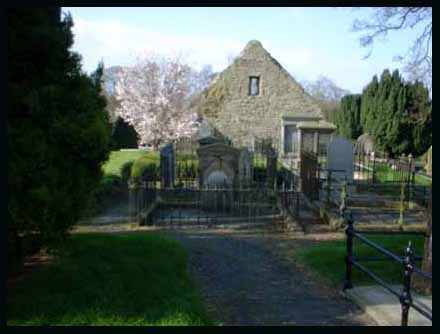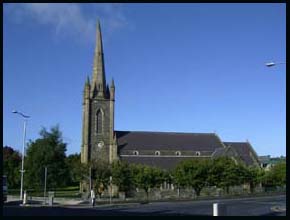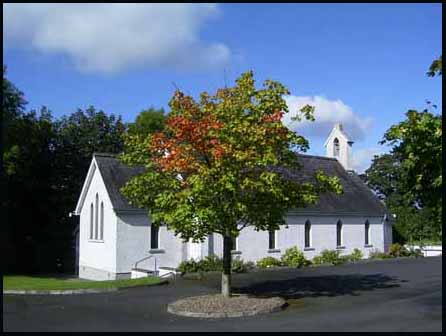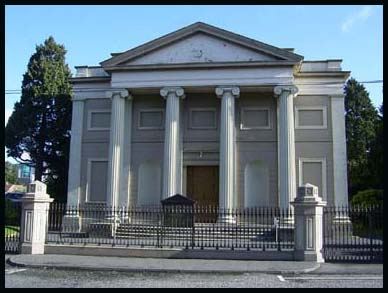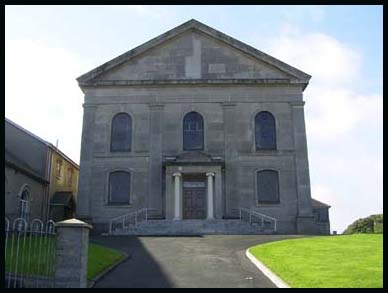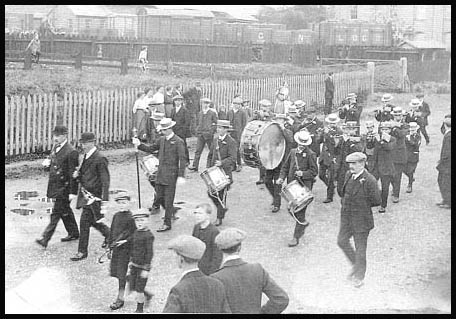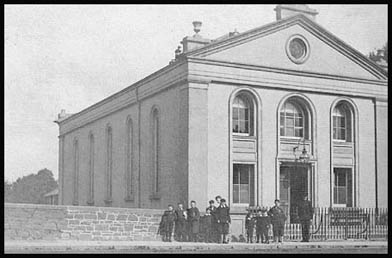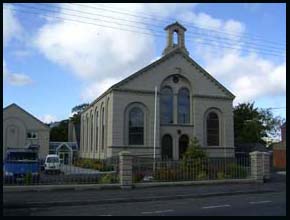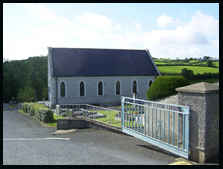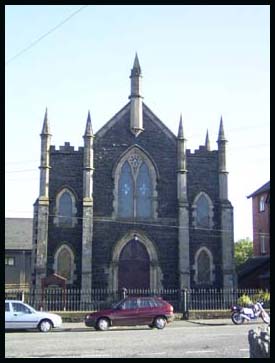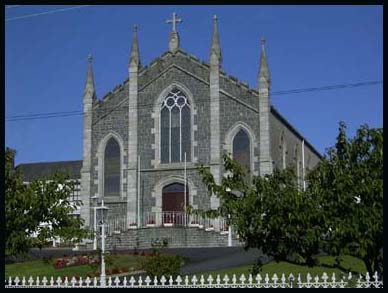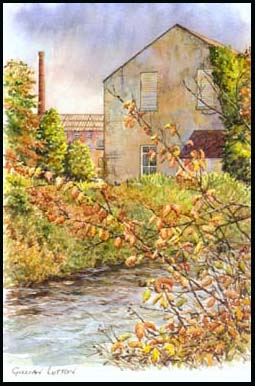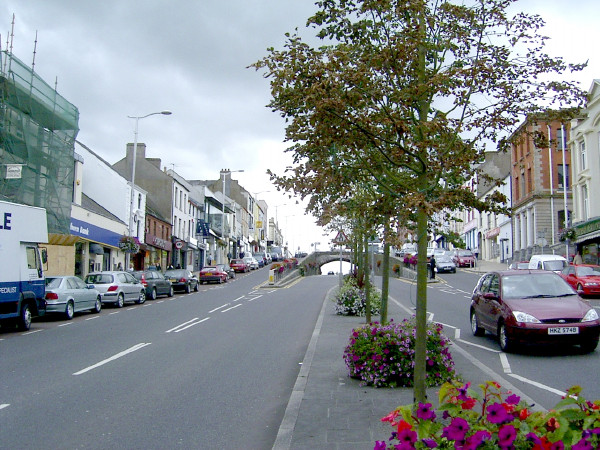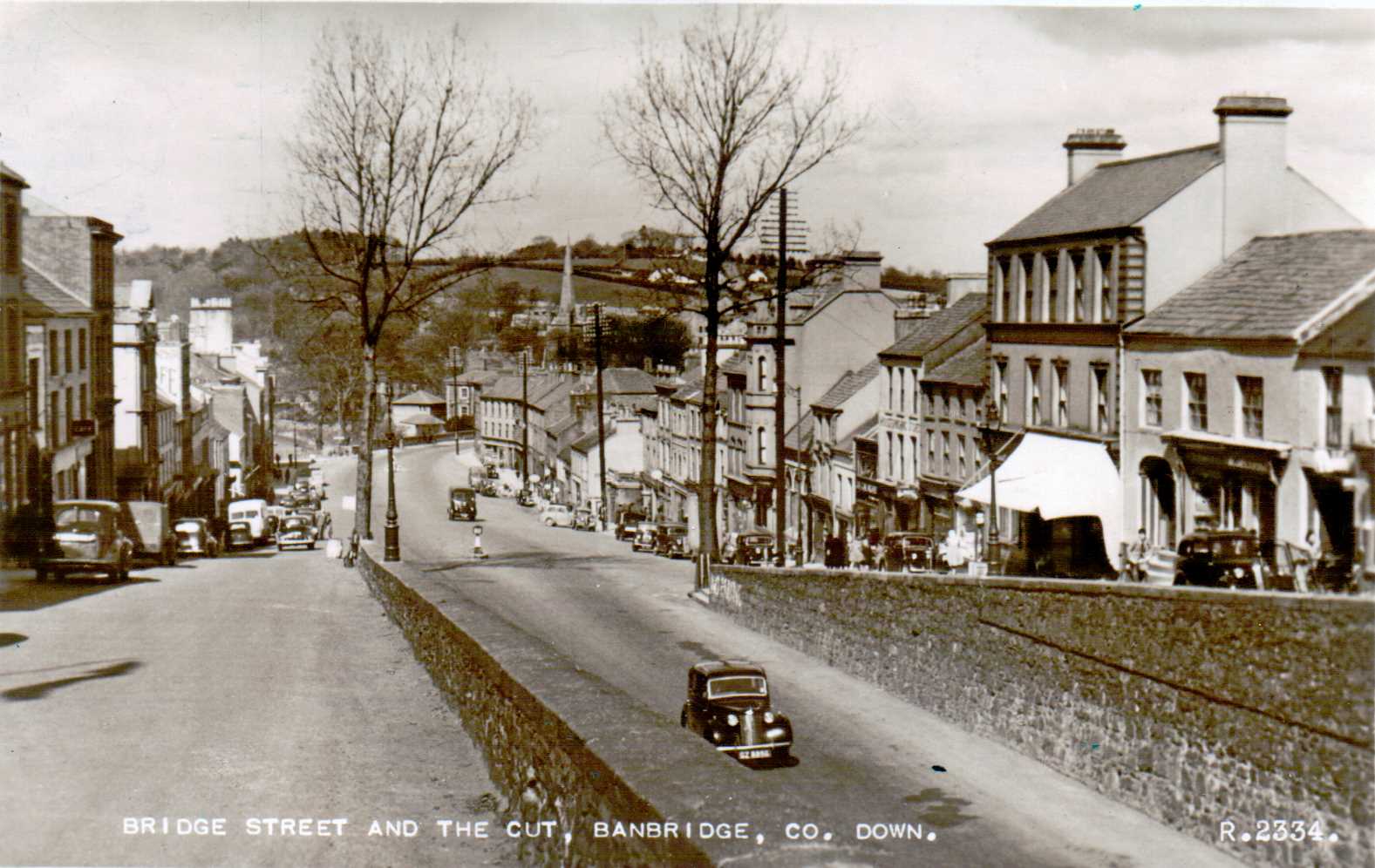 |
Banbridge
Banbridge developed around
a bridge constructed over the river Bann in 1712. The town developed
after 1767 when a patent was granted to hold fairs and markets.
Here's a description of Banbridge, written by a visitor there
in 1796 .
"This country in entirely occupied in the manufacture of
linen, but the late troubles have made trade to languish. The
mills, however, are still going, and it is hoped that a year of
peace will restore order and prosperity. Military life was rigorously
enforced here on the inhabitants; they were not permitted to have
lights in their houses after nine o'clock, and any person found
in the streets after that hour was in danger of being arrested.
A fair was held during the time I stayed in this little town,
and it passed over quite peacefully; the soldiers promenaded through
the market-place and obliged women who wore anything green, ribbon
or otherwise, to take it off.....
A vigorous government in Ireland has been able to repress, and
hold in the path of duty, a people discontented and seduced by
the success of the French innovations."
(Joe Canning, "The Stranger in Iveagh," Banbridge District
Historical Society Journal, Vol. 2, Banbridge, N. Ireland, 1990,
p. 44)
A brown linen market was erected
in 1817. It was an important staging post on the main Belfast-
Dublin road. The road very very steep as can be seen on either
side of The Cut. The road was levelled in 1832/4 and the bridge
constructed at a total cost of £ 19,000. The clock tower
on the right belongs to the market house which was constructed
on its present site in 1834 at a cost of £2,000. The original
market house was in the centre of the road, where the bridge now
stands. The bridge was rebuilt in 1885, widening it from 23 feet
to 46 feet.
In 1828, the Flax Market was
held monthly on a Monday. In 1836 the horse fairs were held on
12th January & 26th August each year. It was described as
the best in the north of Ireland. Cattle fairs were held on the
1st Monday of each month and a market on Tuesday. The tolls &
customs levied belonged to the Marquis of Downshire. Petty Sessions
were held every fortnight. The Court House is in Scarva Street
and was built by the Marquis of Downshire in 1830. It is a whinstone
building corniced with granite. Its dimensions are 60 by 50 feet
with 2 storeys. On the first storey was the meal and corn market,
a black hole and porter's apartment. On the upper storey was the
court room, at the rear of which was the news room and a retiring
room. The top of the building is surmounted by a cupola, in which
there is a clock with 4 faces. A Board of Commissioners was established
in 1828 for the purpose of lighting, paving , watching and cleansing
the town. There were 4 main streets- Newry, Bridge, Scarva and
Rathfriland. In 1841 the popukation of Seapatrick parish was 9528
with the population of Banbridge being 3324 people.
The Post Office Directory
of 1886 says that there was a mineral water factory, a hemstitching
factory & a rope making factory. The population in 1910 was
5006.
Click
here for a photo of Banbridge Railway Station
Click
here to see information on schools
in the area.
Newspaper articles from
Northern Star;
Volunteers Militia meeting 23 Jan 1793; Banbridge Fair notice
6 Mar 1794;
|
